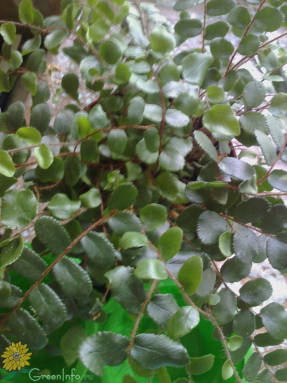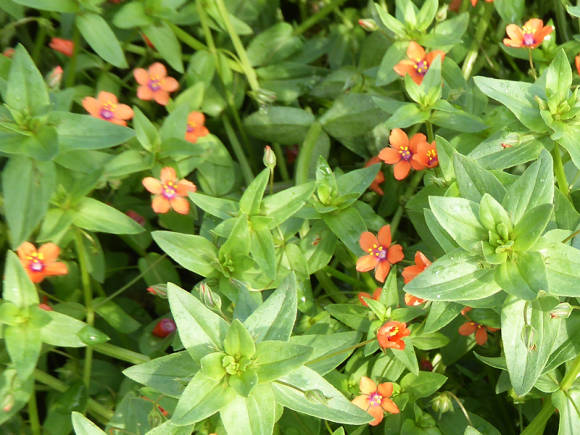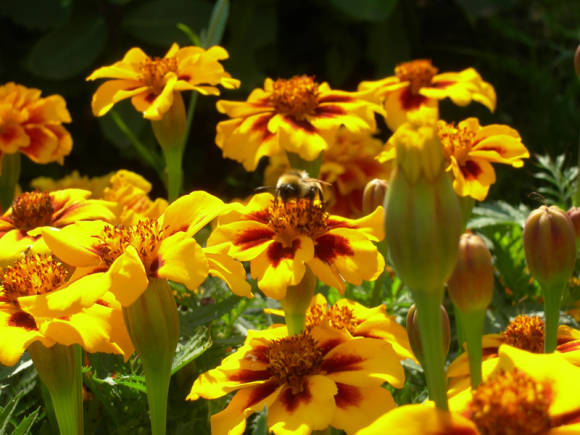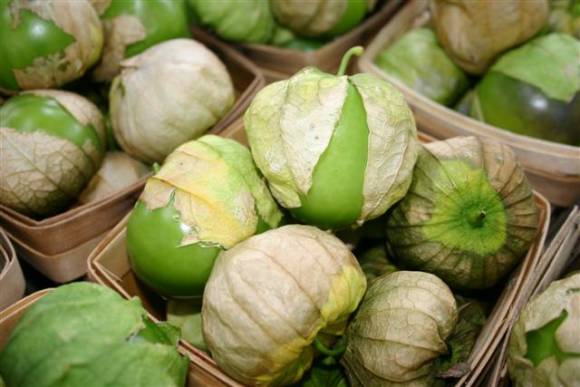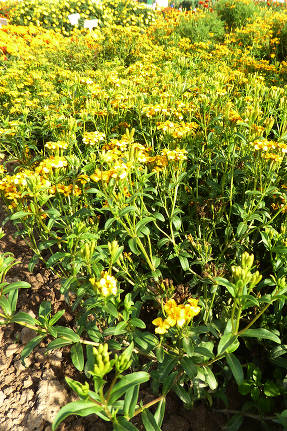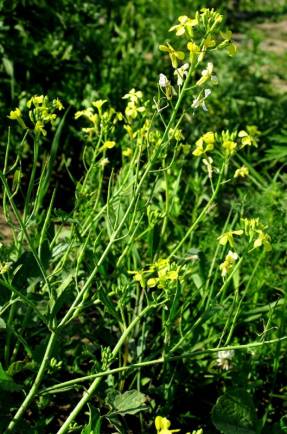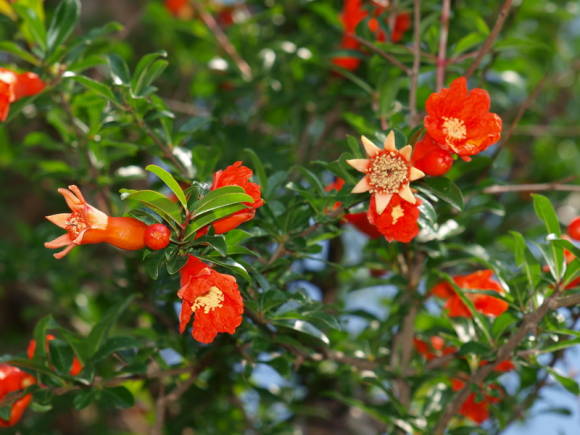
About the history of culture - in the article Orange is a Chinese apple.
Among the numerous varieties of oranges that exist today, some stand out for their special juiciness, others for sweetness or bitterness, and others for an unusual appearance. The wild orange, which grows in the streets all over the Mediterranean, tastes very bitter.
According to the ripening rate, all varieties of oranges are divided into:
- early;
- medium early;
- late.
And according to the size, shape, taste and color of the fruit and pulp, orange varieties are divided into 2 main groups:
- light oranges (with orange pulp);
- ordinary (oval) oranges;
- umbilical oranges;
- blood oranges (with reddish flesh).
Plain or oval oranges Is a very large group of high-yielding varieties. These varieties are characterized by a round or oval shape of the fruit and a tasty sweet and sour pulp, bright yellow color, containing many seeds. Fruit sizes are medium to large, the peel is thin, pale orange or yellow, well fused with the pulp.
The most famous varieties of common oranges:
- Gamlin (Hamlin) is an early-ripening variety with small to medium-sized fruits of a round or slightly flattened shape and a thin, even skin of yellow color. It is grown mainly in Brazil and the USA, has excellent transportability and is stored for a long time, is actively used in indoor floriculture.
- Verna (Verna) is a late variety of oranges of Spanish origin, with medium-sized or medium-sized low-seeded elongated fruits containing sweet, tasty pulp.
- Salustiana (Salustiana) is a late-ripening variety of high economic importance in Spain and Morocco. This variety is characterized by an oval-spherical or slightly flattened shape and a yellow-orange color of a thin, easily peeled peel. The juicy slices are pitted and have a sweet, oily flavor.
 |  |  |
Navel oranges (Navel) is the most popular varietal group in the world, whose trees do not grow thorns, and the fruits have a characteristic round protrusion-navel at the top, a reduced second fruit. Umbilical oranges are the largest, the average weight of fruits is about 200-250 g, the maximum is up to 600 g. citrus aroma. When buying oranges of this group, keep in mind that the larger the "navel" of the orange, the sweeter the orange.
The most popular varieties of navel oranges are:
 |  |  |
- Washington Navel (Washingtoh Navel) is a variety of bright orange oranges of important world economic value, known since the 17th century, and also one of the few oranges that successfully bear fruit in the Transcaucasus. Medium and large orange fruits have a round or slightly elongated shape and weigh from 170 to 300 g. The pulp is bright orange, sweet, with a slight acidity and few seeds. The Washington Navel orange is one of the most popular varieties for home breeding.
- Navel Late (Navel Late) - late variety of oranges, similar to Washington Navel, but with more tender pulp and increased keeping quality;
- Thomson Navel (Thomson Navel) is a round or oval orange variety with a characteristic small navel and relatively thin, light orange skin with fine pores. The pulp of the fruit, compared to Washington Navel, is more fibrous and not as juicy.
- Navelina (Navelina) is the earliest variety of small to medium sized oranges with a small navel. Rounded or ovoid fruits have a thin, finely pored orange peel and a friable, sweet flesh.
- Kara-Kara (Cara Cara Navel Orange) - This variety is a mutation of the Washington Navel variety and was found in Venezuela in 1976.Kara-Kara inherited most of the characteristics of the original variety: the navel, the orange color of the well-detachable zest and the exceptional taste of juicy pulp. But its main difference is the flesh of a ruby hue, comparable to the color of the flesh of the darkest grapefruits. An interesting feature of the variety is the ability to produce a certain number of variegated shoots, on which striped fruits subsequently develop.
 |  |
Bloody orange, blood orange, or blood orange Is a group of varieties that contains anthocyanins, pigments that give the fruits and their pulp a blood-red color. The blood orange is also called the Sicilian orange, since it was first planted in Sicily. The Sicilians claim that the real symbol of Sicily is the "bloody" orange, and not the bloody mafia at all.
The king orange is a natural mutation of the regular orange. Trees of this varietal group are distinguished by long ripening periods, low growth and an elongated crown. Bloody orange fruits are characterized by a rounded, slightly ribbed shape and poorly detachable brown, red or dark orange peel. The flesh of the king is distinguished by its red, orange, burgundy or red-striped color, and the fruits are especially appreciated for their exquisite sweet and sour taste and excellent aroma. Bloody oranges have been cultivated in Sicily since the 9th-10th centuries. They are currently cultivated throughout Italy, Spain, Morocco, and the American states of Florida and California. The blood orange is equally good for juicing as well as for eating.
There are 3 main varieties of blood oranges:
- Moro orange (Moro) is a fairly young variety, bred at the beginning of the 19th century in Sicily in the province of Syracuse. The peel of this orange is orange or reddish-orange in color, the flesh is orange with bloody streaks, bright crimson or almost black. Fruit diameter - from 5 to 8 cm. Weight 170-210 grams. Moro oranges have a strong citrus aroma with a hint of raspberries or wild berries and a bitter aftertaste;
 |  |
- Sanguinello orange (Sanguinello) native to Spain, cultivated in the Northern Hemisphere. The fruits of the blood orange are distinguished by an orange peel with a reddish tint, sweet red flesh with red spots, which contains few seeds. The fruits ripen from February to March;
 |  |
- orange tarocco (Tarocco) is considered one of the most popular Italian varieties and is believed to be the product of a natural mutation of the Sanguinello orange. Tarocco oranges are medium in size, have a thin orange-red skin and do not have a pronounced red pigmentation of the pulp, therefore they are called “half-breeds”. Juicy, sweet, pitted and high in vitamin C make Tarocco red oranges one of the most sought after varieties in the world. Citrus specialists, fruit vendors and true food connoisseurs around the world claim that this continuous juice orange is the best in the world. Cultivated on fertile soils in the vicinity of Mount Etna.
 |  |
Orange hybrids
Crossing an orange with other citrus species has resulted in a number of interesting hybrid forms.
 |  |  |
Citrange (lat. Citroncirus Webberi) Is a hybrid of sweet orange and three-leaf poncirus, the purpose of which was to develop a cold-resistant orange. Citrange tolerates a drop in air temperature to -10 degrees, but its fruits have a bitter taste. Citrange is commonly used in the preparation of drinks, marmalade or jam.
Citranjquat (lat. Citroncirus Citrangequat) - a hybrid of citrange and kumquat, is a compact tree, sometimes with small thorns, giving round or oval fruits with an elongated neck. It is eaten fresh or used to make marmalade and lemonade.
Thomasville (eng.Thomasville citrangequat) - one of the types of citranquat, a hybrid of orange, kumquat Margarita and three-leaf poncirus. Fruits are yellow or yellow-orange in color, medium-sized, oval or pear-shaped. Their peel is thin and bitter, the pulp with a small number of seeds, very sour when unripe, becomes quite edible when fully ripe.
 |  |  |
Clementine (lat. Citrus clementina) - a hybrid of mandarin and orange peel. The fruits of this hybrid are very similar in appearance to tangerines, but differ in a harder skin, rich sweet taste and juicy pulp. The second variety of clementine is a hybrid of tangerine and bitter Seville orange, bred in Algeria in 1902. The fruits are small, orange, with a hard skin.
Clementines are divided into three types:
- corsican clementine has fruits of medium size, covered with an orange-red peel, fragrant pulp, there are no seeds in it;
- spanish clementine can have both small and larger fruits with a bright orange pulp with a sour taste. The fruit contains from two to ten seeds;
- Montreal Clementine - a rare type of citrus with sour fruits containing 10-12 seeds.
Santina (eng. Suntina) - a hybrid of clementine and orlando. Medium to large, bright orange fruits with thin skin, sweet taste and strong aroma. The ripening period is from the end of November to March.
Tangor (English Tangor, Temple orange) - the result of crossing a sweet orange and tangerine. Fruits are medium or large, up to 15 cm in diameter. The shape of the fruit is slightly flattened, the peel is of medium thickness, porous, yellow or deep orange in color. The availability of seeds depends on the variety of tangora. Tangor pulp is very fragrant, orange, has a sour or sweet-sour taste.
 |  |  |
Ellendale (English Ellendale tangor) is a citrus hybrid originally from Australia, a kind of tangor obtained by crossing tangerine, mandarin and orange. Fruits are medium to large in size, juicy, with a reddish-orange peel and very sweet, fragrant dark orange pulp. The rind is thin, smooth, easy to peel. Seeds may vary in quantity or be absent altogether.
Orangelo (English Orangelo) or chironja (Spanish Chironja) - presumably considered a natural hybrid of grapefruit and orange. The homeland of this fruit is Puerto Rico. The fruits are large, the size of a grapefruit, have a slightly elongated or pear-shaped. When ripe, the peel is bright yellow, thin and smooth, quite easily separated from the pulp. There are few seeds. The pulp is orange-orange, tender, juicy. The taste is sweeter, orange-like and devoid of the bitterness of grapefruit.
Agli fruit or agli (eng. Ugli fruit) is the result of crossing a mandarin, grapefruit (or pomelo) and an orange. Agli fruits grow in Jamaica, they are not too beautiful in appearance due to the rough and wrinkled rind. The diameter of the fruit ranges from 10 to 15 cm. The color of the fruit varies from green to yellow-green and orange. Despite its not very attractive appearance in comparison with relatives, the pulp of the agli fruit is very tasty and has a grapefruit note. The fruiting period is from December to April.
 |  |  |
Grapefruit (lat. Citrus paradisi), according to scientists, is a natural hybrid of an orange and a pomelo. The fruits are large, with a diameter of 10 to 15 cm, with a juicy sweet and sour pulp with a slight bitterness. The color of the pulp, depending on the variety, can be almost white, light pink, yellow or reddish. The rind is yellow or reddish.
Meyer's lemon (lat. Citrus meyeri) - presumably the result of hybridization of lemon with orange or tangerine. Large fruits have a rounded shape, when ripe, the peel acquires a yellow-orange hue. The pulp is dark yellow in color, juicy and not as sour as regular lemon, contains seeds.
Natsuidai (Natsumikan, Amanatsu) (eng. Amanatsu, natsumikan) - a natural hybrid of orange and pomelo (or grapefruit).The plant was first discovered in Japan in the 17th century. The fruit has a fairly thick yellow-orange peel, it is eaten fresh, but its juicy pulp tastes quite sour. The fruit contains many seeds.
The most popular varieties of orange for home growing
The following varieties of oranges are considered the most popular for growing at home:
- Torocco Rosso - a variety of Sicilian blood oranges with golden-red fruits and red flesh; have a characteristic delicate aroma and soft, sweet and sour taste;
- Navelina - a high-yielding variety of Spanish oranges, early fruiting and disease resistant. Medium-sized fruits with sweet, juicy, orange flesh with few seeds;
- Vanilla - a variety of Chinese origin, distinguished by medium-sized fruits of a yellowish-orange hue. At the time of flowering, orange trees fill the room with a heady aroma of citrus;
- Pavlovsky - one of the best indoor orange varieties, which is no more than 1 meter high and covered with delicious bright orange fruits;
- Washington Navel - undersized variety, excellent for indoor cultivation, unpretentious and cold-resistant; fruits are round, orange in color, with excellent taste.
Read the article Useful properties of an orange.
Orange - bright, juicy, aromatic, healthy - that's all about it. Food of the gods and a healthy treat for both adults and children. Remember the ancient Greek myths about Hercules. In his eleventh feat, he stole the golden apples of the Hesperides, which grew in the garden of Atlanta. It is believed that these "apples" were actually oranges.
What else can you add to our story about the orange? Probably only the fact that even monuments have been erected to this wonderful citrus - in Odessa, Izhevsk and in the Turkish Fenech.
 |  |
